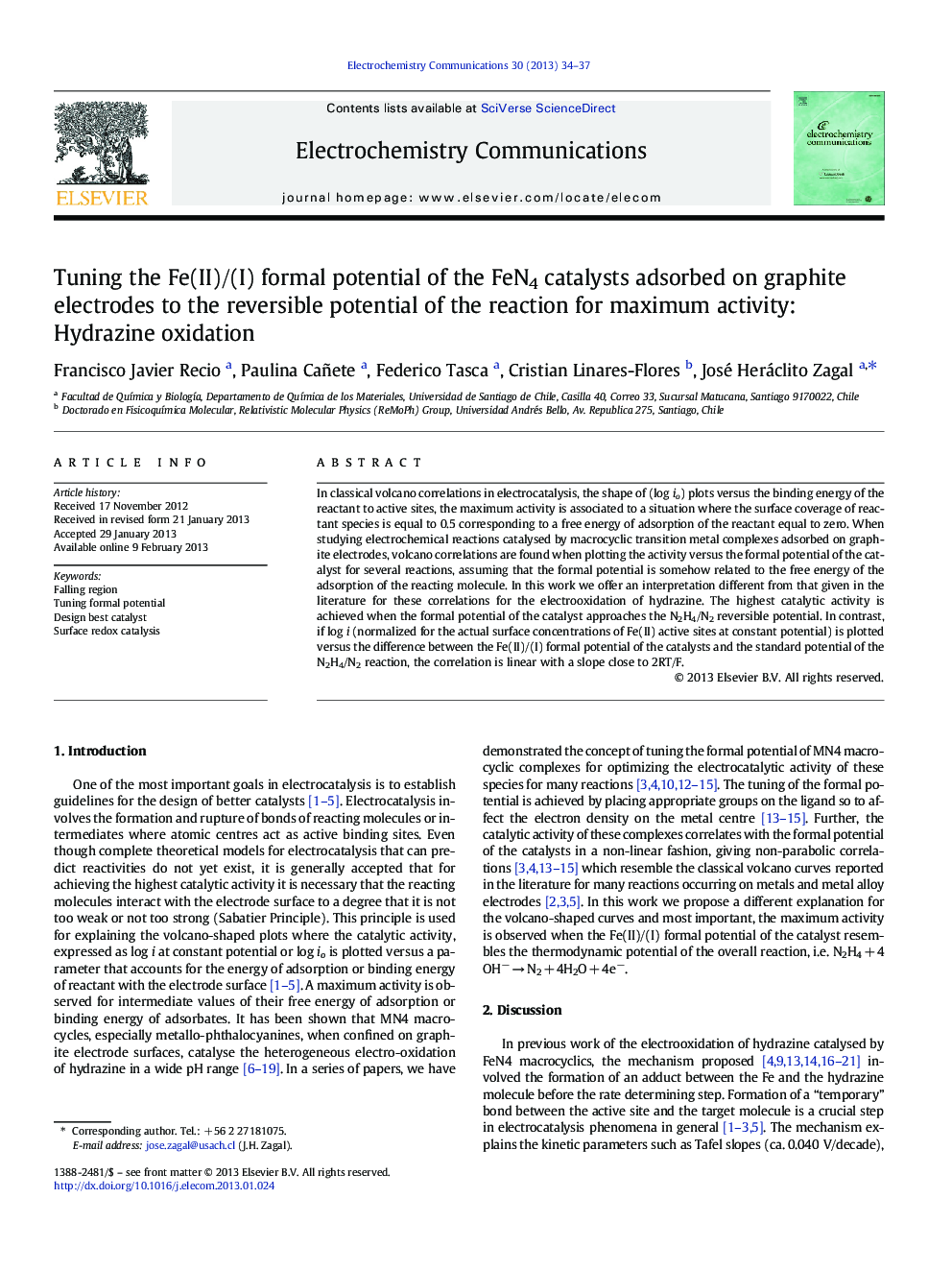| کد مقاله | کد نشریه | سال انتشار | مقاله انگلیسی | نسخه تمام متن |
|---|---|---|---|---|
| 179330 | 459345 | 2013 | 4 صفحه PDF | دانلود رایگان |

In classical volcano correlations in electrocatalysis, the shape of (log io) plots versus the binding energy of the reactant to active sites, the maximum activity is associated to a situation where the surface coverage of reactant species is equal to 0.5 corresponding to a free energy of adsorption of the reactant equal to zero. When studying electrochemical reactions catalysed by macrocyclic transition metal complexes adsorbed on graphite electrodes, volcano correlations are found when plotting the activity versus the formal potential of the catalyst for several reactions, assuming that the formal potential is somehow related to the free energy of the adsorption of the reacting molecule. In this work we offer an interpretation different from that given in the literature for these correlations for the electrooxidation of hydrazine. The highest catalytic activity is achieved when the formal potential of the catalyst approaches the N2H4/N2 reversible potential. In contrast, if log i (normalized for the actual surface concentrations of Fe(II) active sites at constant potential) is plotted versus the difference between the Fe(II)/(I) formal potential of the catalysts and the standard potential of the N2H4/N2 reaction, the correlation is linear with a slope close to 2RT/F.
Figure optionsDownload as PowerPoint slideHighlights
► FeN4 macrocyclic complexes catalyse hydrazine electrooxidation.
► Fe(II)/(I) formal potential of catalysts predicts its catalytic activity.
► Highest catalytic activity exists for a given Fe(II)/(I) redox potential of catalyst.
► Formal potential of catalyst must resemble the reversible potential of the reaction.
Journal: Electrochemistry Communications - Volume 30, May 2013, Pages 34–37